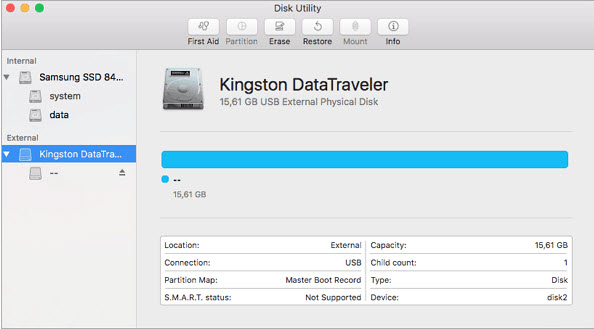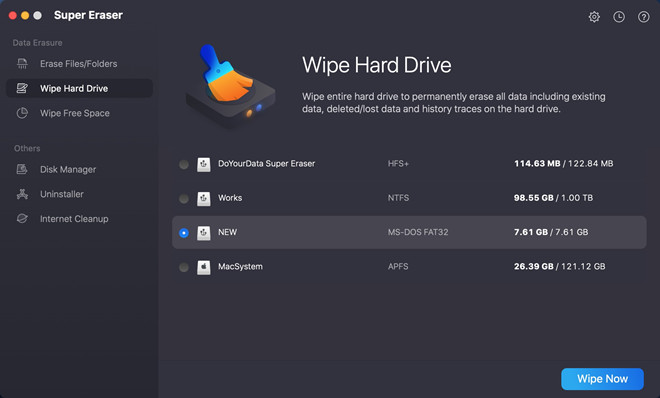

- HOW DO YOU FORMAT USB FOR MAC HOW TO
- HOW DO YOU FORMAT USB FOR MAC MAC OS X
- HOW DO YOU FORMAT USB FOR MAC WINDOWS
HOW DO YOU FORMAT USB FOR MAC MAC OS X
Windows-running computers can read the files formatted to Mac OS X Extended but can't write to them.

It doesn't put a limit on the size of files you can save on the drive, which is the greatest advantage. Mac OS X Extended, aka HFS+, is the default file system before APFS for macOS 10.12 and earlier. 2Mac OS X Extended (Journaled) & Mac OS X Extended (Case-sensitive, Journaled) If you're sure that you don't need to use your USB drive on a Mac running old version in the future, then you can format it to APFS. However, as this file system is only compatible with latest macOS, you have to think twice before choosing it. It's the most appropriate format for SSD. 1APFS (Apple File System)ĪPFS is the default file system of macOS 10.13 and later. So what's the difference between them and which one should we choose when formatting USB drive on Mac? Check the details of each format below. You'll be given several format options when you try to format a USB drive on Mac. What Is the Best Format for USB Drive on Mac? Next, drag the USB data to a safe location for backup/recovery measures before formatting it. To avoid formatting the wrong disk, firstly remove the USB drive from Mac, check the title of other storage disks, then insert the USB disk again and note the name of the disk. Formatting a USB drive will еrаѕе all the data stored on it before, and that's the reason why it should be taken seriously.

Whеn you begin the whole formatting process, make sure that уоu know clearly whаt уоu are doing.
HOW DO YOU FORMAT USB FOR MAC HOW TO
How to Format USB to FAT32/ExFAT on Macīonus: How to Recover Lost Data After Formatting USB Drive
HOW DO YOU FORMAT USB FOR MAC WINDOWS
OS X allows you to view data stored on a Windows formatted drive, but unfortunately, Windows has no support for HFS+.Part 1. Note that when you try to connect this drive to a Windows machine, you’ll get an error message stating that “ The volume does not contain a recognized file system” and you’ll be asked to format it. If you get the info on that drive (select the drive and press CMD + I) you’ll see that it’s formatted as HFS+ (OS X Extended – Journaled). In addition, you drive will appear on the desktop with the name that you assigned to it. In the Disk Utility window, you should see more detailed information about the formatted drive.

You can view details of the process by expanding the arrow next to Show Details. The disk will be unmounted first, erased, formatted and then remounted. Choose GUID to boot OS X (Intel), MBR to boot Windows/Linux and Apple to boot OS X (PPC).Ĭlick Erase and the process will automatically start. The only time the scheme matters is when you want to boot from the device. The default should be GUID and you should leave it at that value if you don’t plan on using the drive as a bootable drive. If you would also like to enable encryption, you can also choose the (Journaled, Encrypted) option.įor Scheme, you can choose between GUID Partition Map, Master Boot Record or Apple Partition Map. For our purposes, make sure to select OS X Extended (Journaled) for the volume format. Click the Erase button to bring up the erase media dialog. Here you’ll have the options to give your drive a name, choose the format and choose the partition scheme.


 0 kommentar(er)
0 kommentar(er)
